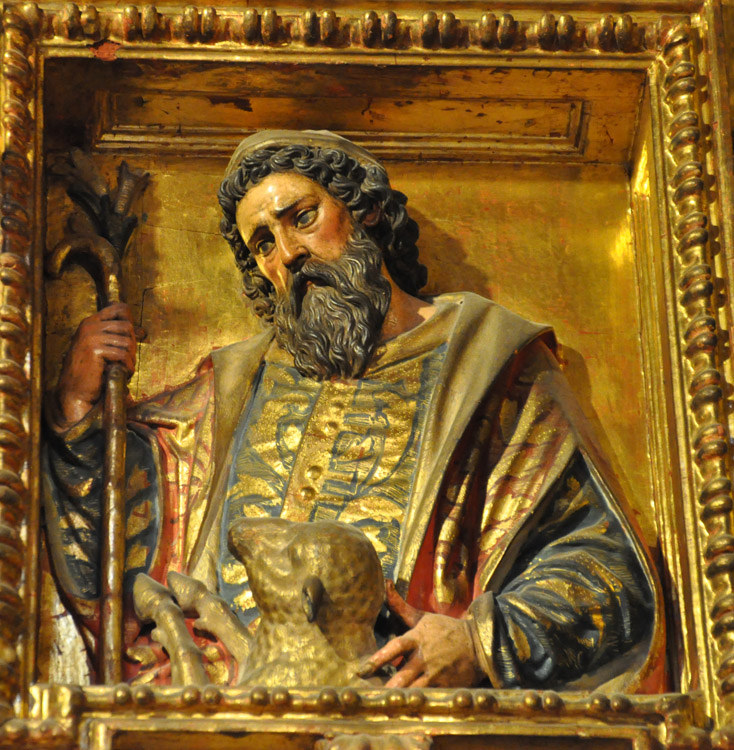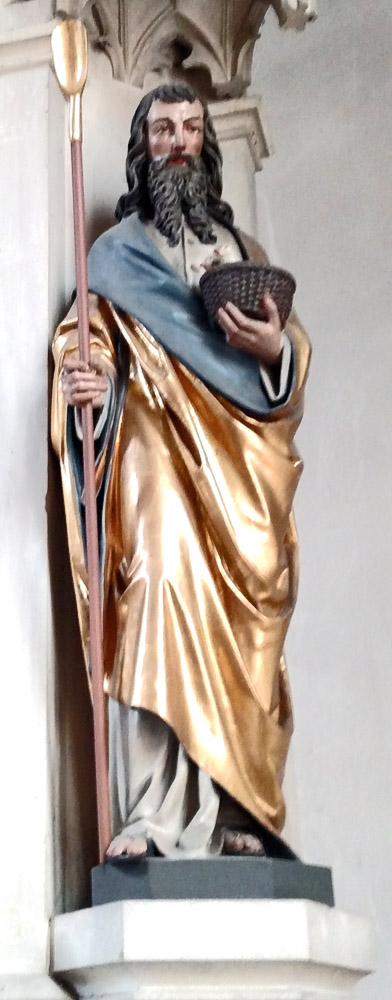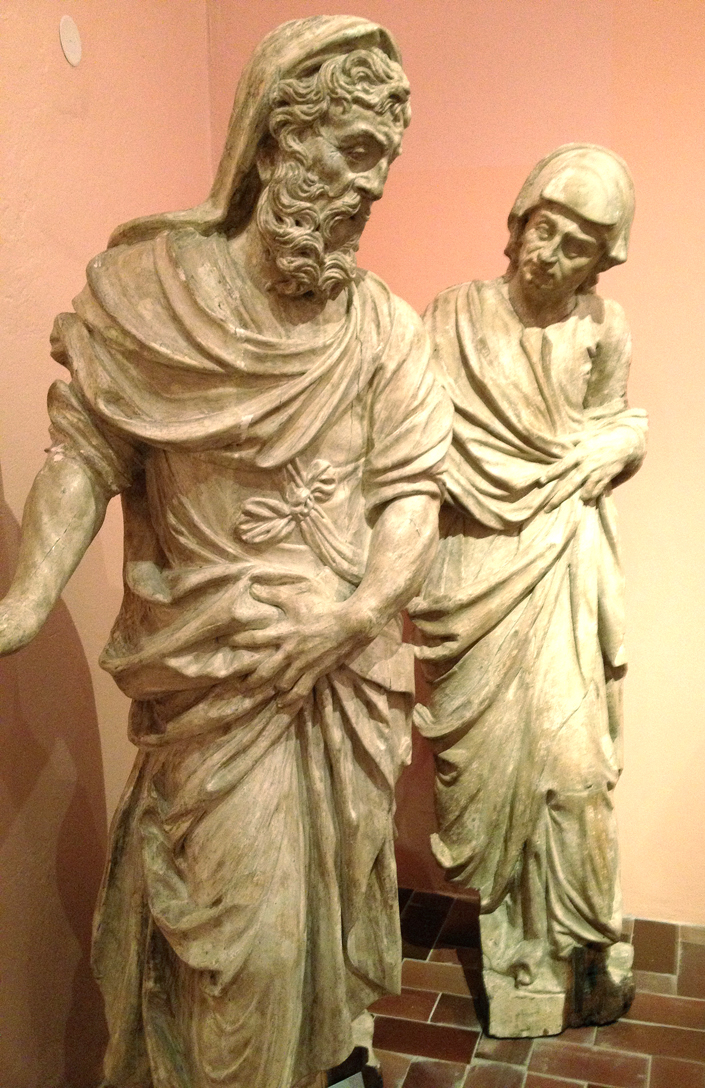NARRATIVE IMAGES
Giotto's Scrovegni Chapel frescoes follow the story in detail. Elsewhere, when only one episode is pictured, it is most likely to be either Mary's birth (see the page for Mary's Birth and Early Life) or the meeting at the Golden Gate.PORTRAITS
Both the portraits and the narrative images usually represent St. Joachim as a man in later middle age, with a forked beard, usually gray, that reaches to about the breastbone. He often carries a staff, referencing his journey into the mountains. In some images there will also be a lamb or sheep (as in the first picture at right), referring either to his rejected offering or to the flocks he took into the mountains.Doves also figure sometimes in Joachim's images, as in the second picture at right. One might imagine that they are the sacrifice that the priests rejected in the Temple. But in images of that episode his offering is a lamb (as in this example by Ghirlandaio). In Leviticus doves are what a person may offer in the Temple if he is too poor to offer the required beast, whereas both the written tradition and the images have it that Joachim was well off.2 It may be that the doves refer to the offering the couple make when they take the infant Mary to the Temple for the "purification," though again the problem is that they were wealthy enough that their offering should be one dove and one lamb, not two doves.
Prepared in 2014 by Richard Stracke, Emeritus Professor of English, Augusta University. Revised 2017-12-04.
HOME PAGE

A panel in an altarpiece in Seville (see the description page).

This statue of St. Joachim stands on the right of the St. Anne altarpiece in Assumption Church, Kelheim, Germany. (See the description page.)

Seventeenth-century statues of St. Joachim and St. Anne in a Croatian monastery (see the description page).
ATTRIBUTES
- Lamb or sheep
- Staff
- Doves (erroneously?)
IMAGES OF JOACHIM & ANNA AT THE GOLDEN GATE
- 1350-55: Nardo di Cione's fresco of SS. Anne and Joachim at the Golden Gate.
- 1350-90: Mosaic by Cesare Nebbia (and workshop)
- 1474: Painting by Bartolomeo Vivarini
- 1485-90: Joachim's expulsion from the Temple is in the bottom register of Ghirlandaio's monumental Life of the Virgin.
- 1515-20: Statuary Group by Benedikt Dreyer
- 16th century: Predella panel by Nicolas Dipre
- 1547-51: Altarpiece panel in Cáceres, Spain.
MORE IMAGES
- Mid-12th century: A portrait of St. Joachim in the Byzantine tradition.
- 1303-1305: Giotto's cycle in the Scrovegni Chapel:
- 1540: In Tintoretto's Madonna and Child with Saints Joachim stands with Anne behind Mary as she holds her wriggling child.
- 17th century: Statue of St. Joachim with the lamb in a Seville altarpiece.
DATES
- Feast day: Originally March 20 in the West and September 9 in the East. Current Catholic and Anglican calendars celebrate Joachim and Anne with a single feast on July 26 (August 16 in the mid-20th century).
NAMES
- The Roman Martyrology for March 20 lists St. Joachim as "Father of the Immaculate Virgin Mother of God, Confessor." According to the Catholic Encyclopedia (s.v. "Confessor"), confessors are "those men [sic] who have distinguished themselves by heroic virtue which God has approved by miracles."
BIOGRAPHY
- Golden Legend #131: html or pdf
- Breviarium Romanum, 838-40
- Acta Sanctorum, March vol. 3, 77-80
- Also see below, note 1.
ALSO SEE
- The Holy Kinship (Anne and Joachim's extended family)
NOTES
1 The story is recounted in the 2nd-century Protevangelium of James (1-5), in the third- or fourth-century Gospel of Pseudo-Matthew (1-4), and in the Golden Legend ("The Nativity of Our Blessed Lady," html or pdf).
2 Leviticus 5:7,11; 12:8.